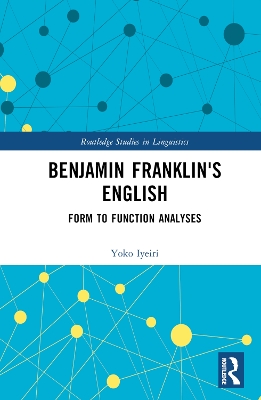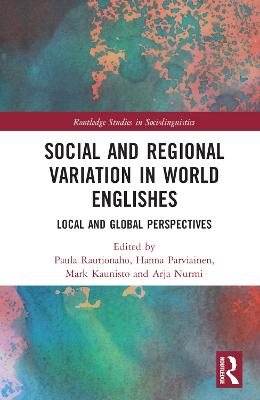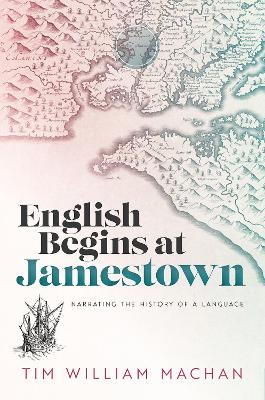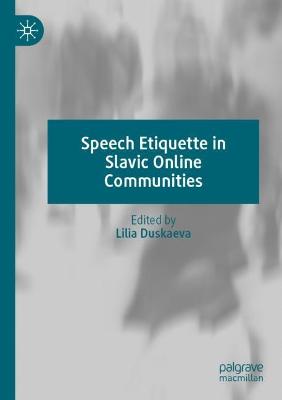Benjamin Franklin's English
 portes grátis
portes grátis
Benjamin Franklin's English
Form to Function Analyses
Iyeiri, Yoko
Taylor & Francis Ltd
11/2024
240
Dura
9781032277042
15 a 20 dias
Descrição não disponível.
Preface and Acknowledgements
List of Tables and Figures
Abbreviations
1. Introduction
1.1. The aim of this study
1.2. Why a single person's English?
1.3. Form-to-function approach and corpus linguistics
1.4. Benjamin Franklin Corpus and some additional comments
2. Form-to-Function Approach 1: Historical Sociolinguistic Perspectives
2.1. Introductory remarks
2.1.1. General
2.1.2. Negation in the BF Corpus: A case study
2.2. Become
2.2.1. The frequency of become
2.2.2. The perfect of become
2.2.3. Become in the pseudo passive construction
2.3. Behalf
2.3.1. In behalf of vs. on behalf of
2.4. Choose
2.4.1 The conditional use of choose
2.4.2. Some other aspects of choose
2.5. Come
2.5.1. Come and its progressive forms
2.5.2. The perfect of come
2.5.3. Come and its collocation
2.6. Fall
2.6.1. The frequency of the verb fall and its usage
2.6.2. The perfect of fall
2.7. Fear
2.7.1. The frequency of the verb fear and its first-person use
2.7.2. The complementation of the verb fear and its parenthetical use
2.7.3. The noun fear
2.8. Forget
2.8.1. The past participle forms of forget
2.8.2. If I forget not
2.8.3. Forget and its subject
2.8.4. Forget and its complementation
2.9. Go
2.9.1. Go and its progressive forms
2.9.2. The perfect of go
2.9.3. Go and its collocation
2.10. Like
2.10.1. The verb like
2.10.2. Like as a hedge
2.10.3. Like vs. likely
2.11. Methinks
2.11.1. Methinks as a fossilized lexical item
2.12. Please
2.12.1. The pragmatic use of please
2.12.2. Please and its transitivity
2.13. Pray
2.13.1. The pragmatic use of pray
2.13.2. The verb pray followed by that-clauses and to-infinitives
2.14. Remember
2.14.1. Remember and its collocation
2.14.2. Discoursal nature of remember
2.14.3. Remember and its complementation
2.15. Show
2.15.1. Show vs. Shew
2.15.2. Show and the double-object construction
2.16. Think
2.16.1. Think and the first and second persons
2.16.2. The comment clause I think
2.17. Work
2.17.1. The preterite and past participle forms of work
2.18. Write
2.18.1. The preterite and past participle forms of write
2.18.2. I wrote a few lines to you, or the dative object construction
3. Form-to-Function Approach 2: Synchronic and Diachronic Perspectives
3.1. Introductory remarks
3.2. Arrive
3.2.1. The perfect of arrive
3.2.2. Arrive and adverbs
3.3. Avoid
3.3.1. Avoid -ing
3.4. Dare
3.4.1. The status of dare and its use in comment clauses
3.5. Doubt
3.5.1. The verb doubt and its complementation
3.5.2. The noun doubt and its complementation
3.5.3. Doubt and author orientation
3.6. Drink
3.6.1. Drank and drunk
3.6.2. Drink and its objects
3.7. Exceedingly
3.7.1. Exceeding vs. exceedingly
3.8. Forbear
3.8.1. Forbear and its complementation
3.9. Forbid
3.9.1. The past participle forms of forbid
3.9.2. Forbid and its complementation
3.10. Grow
3.10.1. Grow and some syntactic features
3.10.2. Grow with animate and inanimate subjects
3.11. Help
3.11.1. Help and its complementation
3.11.2. Cannot help -ing
3.12. Need
3.12.1. The status of need
3.12.2. Other related expressions
3.13. Return
3.13.1. The perfect of return
3.13.2. The verb return and adverbs
3.14. Scarce
3.14.1. Scarce vs. scarcely
3.14.2. Scarce, scarcely and their collocation
3.15. Speak
3.15.1. The past participle forms of speak
3.15.2. Bespeak, an etymologically related verb
3.16. Street
3.16.1. In the street vs. on the street
3.17. Suffer
3.17.1. Transitive and intransitive uses of suffer
3.17.2. Suffer plus to-infinitive
4. Discussion and Conclusion
4.1. About this chapter
4.2 Discussion from functional perspectives
4.2.1. Morphological and orthographic variation
4.2.2. Auxiliaries vs. lexical verbs
4.2.3. Progressive forms
4.2.4. Be-perfect vs. have-perfect
4.2.5. Passive
4.2.6. The double-object construction
4.2.7. Complementation
4.2.8. Adverbs
4.2.9. Choice of prepositions
4.2.10. Comment clauses and author orientation
4.2.11. Politeness expressions and others
4.3. Concluding remarks
4.3.1. Benjamin Franklin's English
4.3.2. On the form-to-function approach
References
Electronic resources
Bibliography
Appendix
List of Letters
Index
List of Tables and Figures
Abbreviations
1. Introduction
1.1. The aim of this study
1.2. Why a single person's English?
1.3. Form-to-function approach and corpus linguistics
1.4. Benjamin Franklin Corpus and some additional comments
2. Form-to-Function Approach 1: Historical Sociolinguistic Perspectives
2.1. Introductory remarks
2.1.1. General
2.1.2. Negation in the BF Corpus: A case study
2.2. Become
2.2.1. The frequency of become
2.2.2. The perfect of become
2.2.3. Become in the pseudo passive construction
2.3. Behalf
2.3.1. In behalf of vs. on behalf of
2.4. Choose
2.4.1 The conditional use of choose
2.4.2. Some other aspects of choose
2.5. Come
2.5.1. Come and its progressive forms
2.5.2. The perfect of come
2.5.3. Come and its collocation
2.6. Fall
2.6.1. The frequency of the verb fall and its usage
2.6.2. The perfect of fall
2.7. Fear
2.7.1. The frequency of the verb fear and its first-person use
2.7.2. The complementation of the verb fear and its parenthetical use
2.7.3. The noun fear
2.8. Forget
2.8.1. The past participle forms of forget
2.8.2. If I forget not
2.8.3. Forget and its subject
2.8.4. Forget and its complementation
2.9. Go
2.9.1. Go and its progressive forms
2.9.2. The perfect of go
2.9.3. Go and its collocation
2.10. Like
2.10.1. The verb like
2.10.2. Like as a hedge
2.10.3. Like vs. likely
2.11. Methinks
2.11.1. Methinks as a fossilized lexical item
2.12. Please
2.12.1. The pragmatic use of please
2.12.2. Please and its transitivity
2.13. Pray
2.13.1. The pragmatic use of pray
2.13.2. The verb pray followed by that-clauses and to-infinitives
2.14. Remember
2.14.1. Remember and its collocation
2.14.2. Discoursal nature of remember
2.14.3. Remember and its complementation
2.15. Show
2.15.1. Show vs. Shew
2.15.2. Show and the double-object construction
2.16. Think
2.16.1. Think and the first and second persons
2.16.2. The comment clause I think
2.17. Work
2.17.1. The preterite and past participle forms of work
2.18. Write
2.18.1. The preterite and past participle forms of write
2.18.2. I wrote a few lines to you, or the dative object construction
3. Form-to-Function Approach 2: Synchronic and Diachronic Perspectives
3.1. Introductory remarks
3.2. Arrive
3.2.1. The perfect of arrive
3.2.2. Arrive and adverbs
3.3. Avoid
3.3.1. Avoid -ing
3.4. Dare
3.4.1. The status of dare and its use in comment clauses
3.5. Doubt
3.5.1. The verb doubt and its complementation
3.5.2. The noun doubt and its complementation
3.5.3. Doubt and author orientation
3.6. Drink
3.6.1. Drank and drunk
3.6.2. Drink and its objects
3.7. Exceedingly
3.7.1. Exceeding vs. exceedingly
3.8. Forbear
3.8.1. Forbear and its complementation
3.9. Forbid
3.9.1. The past participle forms of forbid
3.9.2. Forbid and its complementation
3.10. Grow
3.10.1. Grow and some syntactic features
3.10.2. Grow with animate and inanimate subjects
3.11. Help
3.11.1. Help and its complementation
3.11.2. Cannot help -ing
3.12. Need
3.12.1. The status of need
3.12.2. Other related expressions
3.13. Return
3.13.1. The perfect of return
3.13.2. The verb return and adverbs
3.14. Scarce
3.14.1. Scarce vs. scarcely
3.14.2. Scarce, scarcely and their collocation
3.15. Speak
3.15.1. The past participle forms of speak
3.15.2. Bespeak, an etymologically related verb
3.16. Street
3.16.1. In the street vs. on the street
3.17. Suffer
3.17.1. Transitive and intransitive uses of suffer
3.17.2. Suffer plus to-infinitive
4. Discussion and Conclusion
4.1. About this chapter
4.2 Discussion from functional perspectives
4.2.1. Morphological and orthographic variation
4.2.2. Auxiliaries vs. lexical verbs
4.2.3. Progressive forms
4.2.4. Be-perfect vs. have-perfect
4.2.5. Passive
4.2.6. The double-object construction
4.2.7. Complementation
4.2.8. Adverbs
4.2.9. Choice of prepositions
4.2.10. Comment clauses and author orientation
4.2.11. Politeness expressions and others
4.3. Concluding remarks
4.3.1. Benjamin Franklin's English
4.3.2. On the form-to-function approach
References
Electronic resources
Bibliography
Appendix
List of Letters
Index
Este título pertence ao(s) assunto(s) indicados(s). Para ver outros títulos clique no assunto desejado.
American politics;lexicon;American English;form to function;historical sociolinguistics;historical pragmatics;intra-individual variation
Preface and Acknowledgements
List of Tables and Figures
Abbreviations
1. Introduction
1.1. The aim of this study
1.2. Why a single person's English?
1.3. Form-to-function approach and corpus linguistics
1.4. Benjamin Franklin Corpus and some additional comments
2. Form-to-Function Approach 1: Historical Sociolinguistic Perspectives
2.1. Introductory remarks
2.1.1. General
2.1.2. Negation in the BF Corpus: A case study
2.2. Become
2.2.1. The frequency of become
2.2.2. The perfect of become
2.2.3. Become in the pseudo passive construction
2.3. Behalf
2.3.1. In behalf of vs. on behalf of
2.4. Choose
2.4.1 The conditional use of choose
2.4.2. Some other aspects of choose
2.5. Come
2.5.1. Come and its progressive forms
2.5.2. The perfect of come
2.5.3. Come and its collocation
2.6. Fall
2.6.1. The frequency of the verb fall and its usage
2.6.2. The perfect of fall
2.7. Fear
2.7.1. The frequency of the verb fear and its first-person use
2.7.2. The complementation of the verb fear and its parenthetical use
2.7.3. The noun fear
2.8. Forget
2.8.1. The past participle forms of forget
2.8.2. If I forget not
2.8.3. Forget and its subject
2.8.4. Forget and its complementation
2.9. Go
2.9.1. Go and its progressive forms
2.9.2. The perfect of go
2.9.3. Go and its collocation
2.10. Like
2.10.1. The verb like
2.10.2. Like as a hedge
2.10.3. Like vs. likely
2.11. Methinks
2.11.1. Methinks as a fossilized lexical item
2.12. Please
2.12.1. The pragmatic use of please
2.12.2. Please and its transitivity
2.13. Pray
2.13.1. The pragmatic use of pray
2.13.2. The verb pray followed by that-clauses and to-infinitives
2.14. Remember
2.14.1. Remember and its collocation
2.14.2. Discoursal nature of remember
2.14.3. Remember and its complementation
2.15. Show
2.15.1. Show vs. Shew
2.15.2. Show and the double-object construction
2.16. Think
2.16.1. Think and the first and second persons
2.16.2. The comment clause I think
2.17. Work
2.17.1. The preterite and past participle forms of work
2.18. Write
2.18.1. The preterite and past participle forms of write
2.18.2. I wrote a few lines to you, or the dative object construction
3. Form-to-Function Approach 2: Synchronic and Diachronic Perspectives
3.1. Introductory remarks
3.2. Arrive
3.2.1. The perfect of arrive
3.2.2. Arrive and adverbs
3.3. Avoid
3.3.1. Avoid -ing
3.4. Dare
3.4.1. The status of dare and its use in comment clauses
3.5. Doubt
3.5.1. The verb doubt and its complementation
3.5.2. The noun doubt and its complementation
3.5.3. Doubt and author orientation
3.6. Drink
3.6.1. Drank and drunk
3.6.2. Drink and its objects
3.7. Exceedingly
3.7.1. Exceeding vs. exceedingly
3.8. Forbear
3.8.1. Forbear and its complementation
3.9. Forbid
3.9.1. The past participle forms of forbid
3.9.2. Forbid and its complementation
3.10. Grow
3.10.1. Grow and some syntactic features
3.10.2. Grow with animate and inanimate subjects
3.11. Help
3.11.1. Help and its complementation
3.11.2. Cannot help -ing
3.12. Need
3.12.1. The status of need
3.12.2. Other related expressions
3.13. Return
3.13.1. The perfect of return
3.13.2. The verb return and adverbs
3.14. Scarce
3.14.1. Scarce vs. scarcely
3.14.2. Scarce, scarcely and their collocation
3.15. Speak
3.15.1. The past participle forms of speak
3.15.2. Bespeak, an etymologically related verb
3.16. Street
3.16.1. In the street vs. on the street
3.17. Suffer
3.17.1. Transitive and intransitive uses of suffer
3.17.2. Suffer plus to-infinitive
4. Discussion and Conclusion
4.1. About this chapter
4.2 Discussion from functional perspectives
4.2.1. Morphological and orthographic variation
4.2.2. Auxiliaries vs. lexical verbs
4.2.3. Progressive forms
4.2.4. Be-perfect vs. have-perfect
4.2.5. Passive
4.2.6. The double-object construction
4.2.7. Complementation
4.2.8. Adverbs
4.2.9. Choice of prepositions
4.2.10. Comment clauses and author orientation
4.2.11. Politeness expressions and others
4.3. Concluding remarks
4.3.1. Benjamin Franklin's English
4.3.2. On the form-to-function approach
References
Electronic resources
Bibliography
Appendix
List of Letters
Index
List of Tables and Figures
Abbreviations
1. Introduction
1.1. The aim of this study
1.2. Why a single person's English?
1.3. Form-to-function approach and corpus linguistics
1.4. Benjamin Franklin Corpus and some additional comments
2. Form-to-Function Approach 1: Historical Sociolinguistic Perspectives
2.1. Introductory remarks
2.1.1. General
2.1.2. Negation in the BF Corpus: A case study
2.2. Become
2.2.1. The frequency of become
2.2.2. The perfect of become
2.2.3. Become in the pseudo passive construction
2.3. Behalf
2.3.1. In behalf of vs. on behalf of
2.4. Choose
2.4.1 The conditional use of choose
2.4.2. Some other aspects of choose
2.5. Come
2.5.1. Come and its progressive forms
2.5.2. The perfect of come
2.5.3. Come and its collocation
2.6. Fall
2.6.1. The frequency of the verb fall and its usage
2.6.2. The perfect of fall
2.7. Fear
2.7.1. The frequency of the verb fear and its first-person use
2.7.2. The complementation of the verb fear and its parenthetical use
2.7.3. The noun fear
2.8. Forget
2.8.1. The past participle forms of forget
2.8.2. If I forget not
2.8.3. Forget and its subject
2.8.4. Forget and its complementation
2.9. Go
2.9.1. Go and its progressive forms
2.9.2. The perfect of go
2.9.3. Go and its collocation
2.10. Like
2.10.1. The verb like
2.10.2. Like as a hedge
2.10.3. Like vs. likely
2.11. Methinks
2.11.1. Methinks as a fossilized lexical item
2.12. Please
2.12.1. The pragmatic use of please
2.12.2. Please and its transitivity
2.13. Pray
2.13.1. The pragmatic use of pray
2.13.2. The verb pray followed by that-clauses and to-infinitives
2.14. Remember
2.14.1. Remember and its collocation
2.14.2. Discoursal nature of remember
2.14.3. Remember and its complementation
2.15. Show
2.15.1. Show vs. Shew
2.15.2. Show and the double-object construction
2.16. Think
2.16.1. Think and the first and second persons
2.16.2. The comment clause I think
2.17. Work
2.17.1. The preterite and past participle forms of work
2.18. Write
2.18.1. The preterite and past participle forms of write
2.18.2. I wrote a few lines to you, or the dative object construction
3. Form-to-Function Approach 2: Synchronic and Diachronic Perspectives
3.1. Introductory remarks
3.2. Arrive
3.2.1. The perfect of arrive
3.2.2. Arrive and adverbs
3.3. Avoid
3.3.1. Avoid -ing
3.4. Dare
3.4.1. The status of dare and its use in comment clauses
3.5. Doubt
3.5.1. The verb doubt and its complementation
3.5.2. The noun doubt and its complementation
3.5.3. Doubt and author orientation
3.6. Drink
3.6.1. Drank and drunk
3.6.2. Drink and its objects
3.7. Exceedingly
3.7.1. Exceeding vs. exceedingly
3.8. Forbear
3.8.1. Forbear and its complementation
3.9. Forbid
3.9.1. The past participle forms of forbid
3.9.2. Forbid and its complementation
3.10. Grow
3.10.1. Grow and some syntactic features
3.10.2. Grow with animate and inanimate subjects
3.11. Help
3.11.1. Help and its complementation
3.11.2. Cannot help -ing
3.12. Need
3.12.1. The status of need
3.12.2. Other related expressions
3.13. Return
3.13.1. The perfect of return
3.13.2. The verb return and adverbs
3.14. Scarce
3.14.1. Scarce vs. scarcely
3.14.2. Scarce, scarcely and their collocation
3.15. Speak
3.15.1. The past participle forms of speak
3.15.2. Bespeak, an etymologically related verb
3.16. Street
3.16.1. In the street vs. on the street
3.17. Suffer
3.17.1. Transitive and intransitive uses of suffer
3.17.2. Suffer plus to-infinitive
4. Discussion and Conclusion
4.1. About this chapter
4.2 Discussion from functional perspectives
4.2.1. Morphological and orthographic variation
4.2.2. Auxiliaries vs. lexical verbs
4.2.3. Progressive forms
4.2.4. Be-perfect vs. have-perfect
4.2.5. Passive
4.2.6. The double-object construction
4.2.7. Complementation
4.2.8. Adverbs
4.2.9. Choice of prepositions
4.2.10. Comment clauses and author orientation
4.2.11. Politeness expressions and others
4.3. Concluding remarks
4.3.1. Benjamin Franklin's English
4.3.2. On the form-to-function approach
References
Electronic resources
Bibliography
Appendix
List of Letters
Index
Este título pertence ao(s) assunto(s) indicados(s). Para ver outros títulos clique no assunto desejado.







